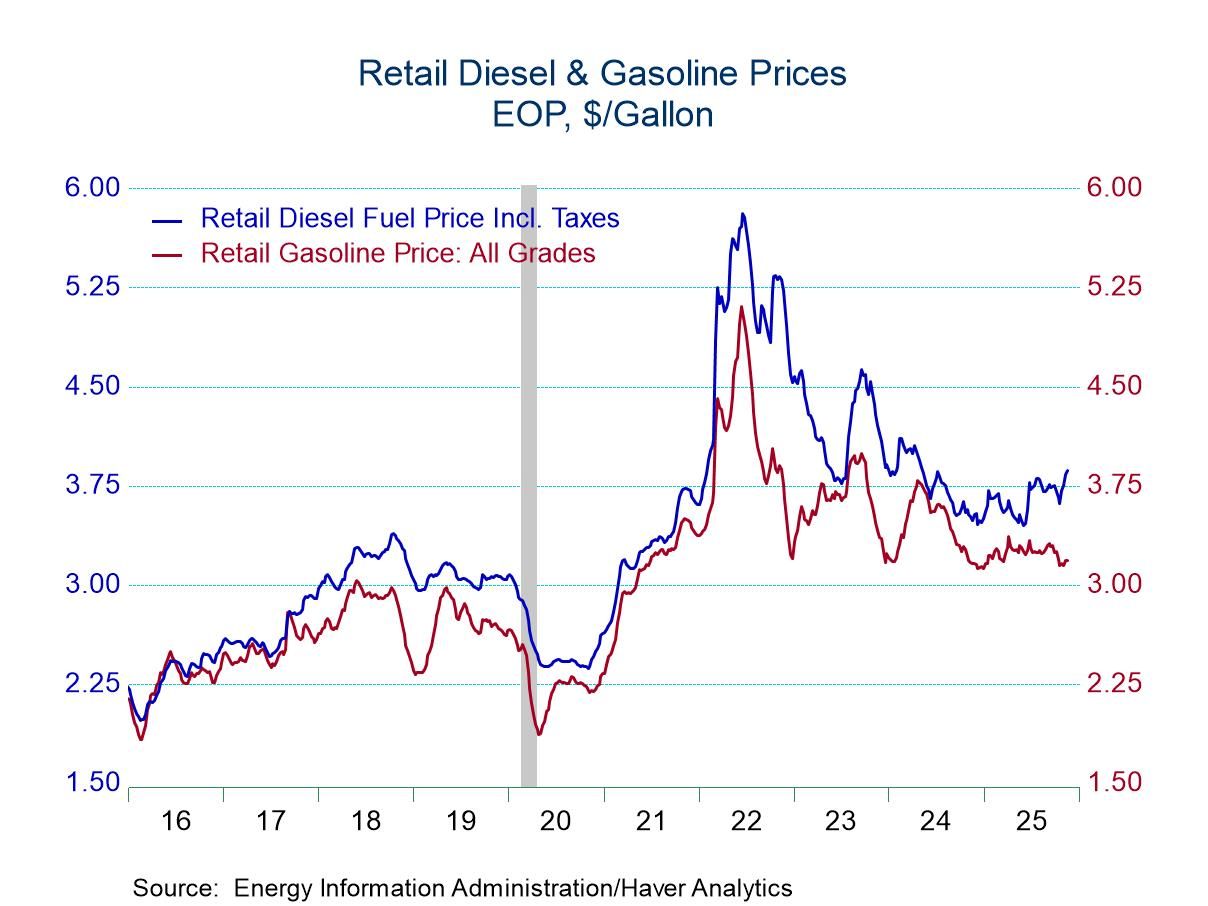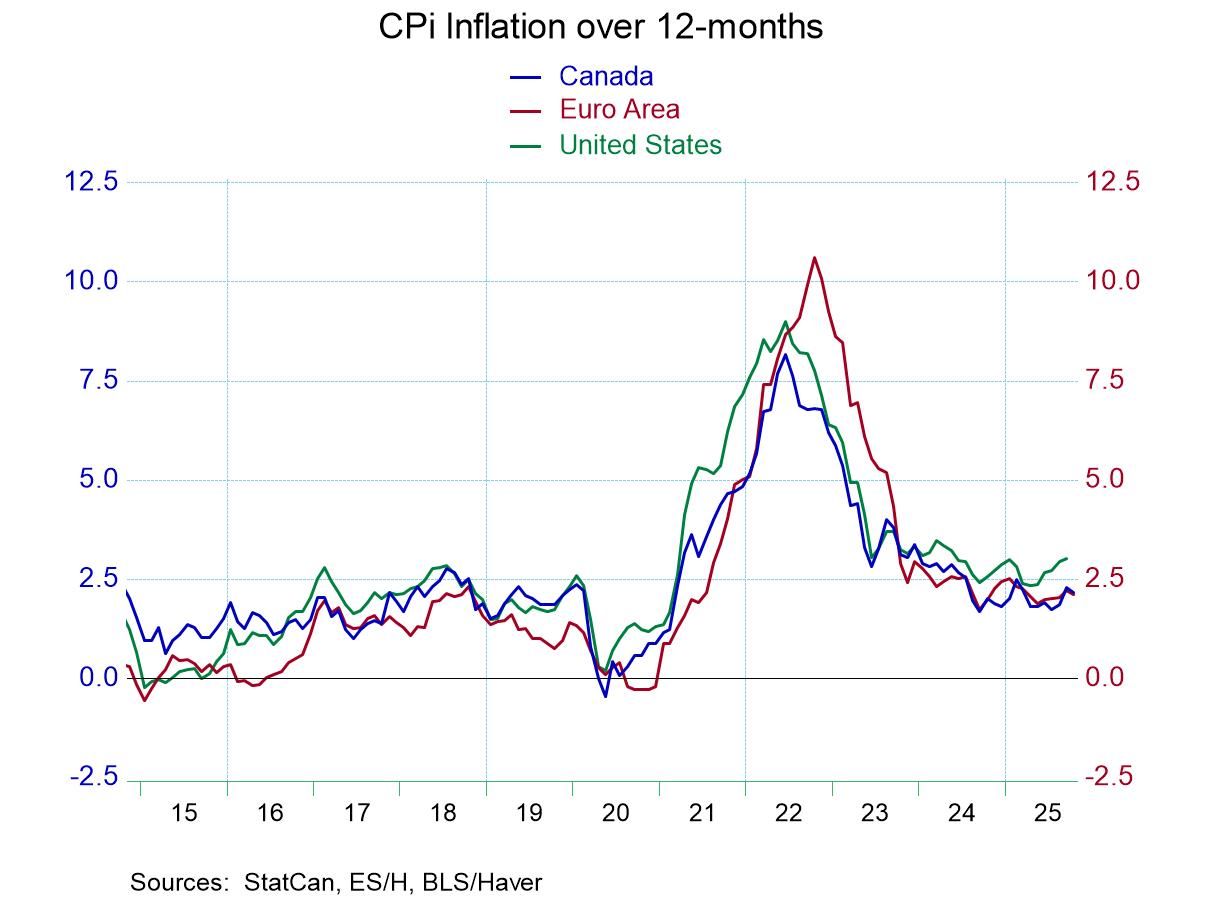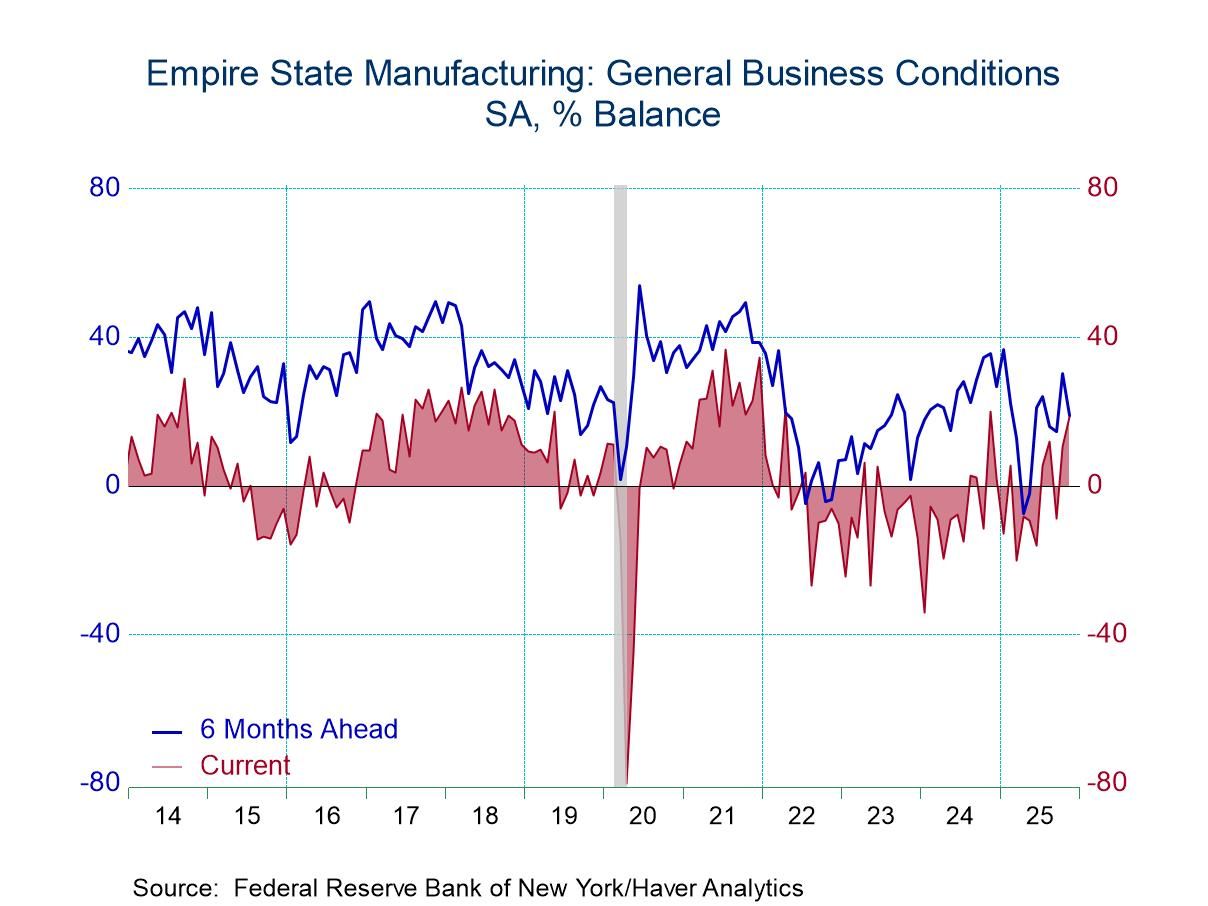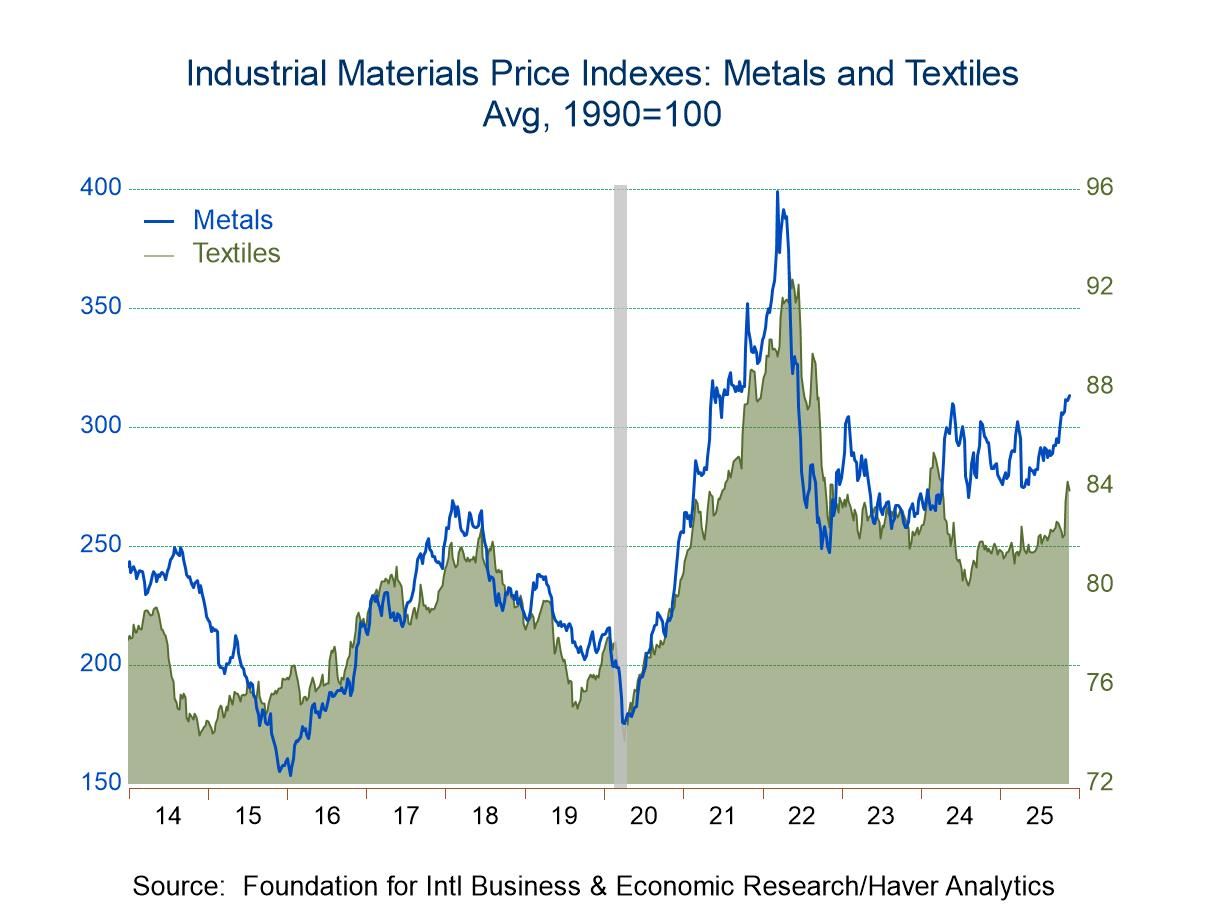Empire State Manufacturing Index Falls in December
by:Sandy Batten
|in:Economy in Brief
Summary
-
Headline index re-enters contraction territory after brief emergence in November.
-
Orders continued to slip while shipments slowed.
-
Delivery times little changed, remain near normal.
-
Employment continued to increase.
The FRB New York Empire State Manufacturing Index of general business conditions slumped nearly 16 points to -11.2 in December from 4.5 in November, indicating that general business conditions had deteriorated significantly since November. Twenty-three percent of respondents reported that general conditions had improved in December (down from 33.2% in November) while 34% indicated that conditions had worsened (up from 28.7% in November). The market consensus had expected the index to fall but only to about zero. The December survey responses were collected between December 2 and December 9.
The headline index reflects the answer to a single question concerning general business conditions. It is not calculated from its components as is the ISM Purchasing Managers' Index. Haver Analytics uses the information in this survey to calculate an index along the lines of the ISM PMI. That calculated index fell in December, to 52.1 from 53.6 in November, but remained above the critical 50 level that separates expansion from contraction. In other words, the components of the index were stronger in December than what was reflected in the headline index and indeed pointed to continued expansion. Still, by either measure, the manufacturing sector in the FRB New York district is coming under increased stress.
For the components, the new orders index was little changed at -3.6 in December versus -3.3 in November, still indicating contraction. By contrast, the shipments index remained positive at 5.3, though it fell in December from 8.0 in November, indicating that shipments were still rising in December but at a slower pace than in November. The delivery times index slipped to 1.9 in December from 2.9 in December, well off its spring-time highs when broken supply chains were prominent.
Despite the overall decline in business conditions, the index for number of employees edged up to 14.0 in December from 12.2 in November, marking another month of employment gains. The average workweek index, however, fell markedly to -4.5 from 6.9 in November, signaling a small decline in hours worked. The pace of price increases was little changed, with the prices paid index holding steady at 50.5 and the prices received index down only slightly to 25.2 from 27.2 last month. Both price indexes are well off their recent highs.
The index for future business conditions climbed 12 points out of negative territory in December, but remained subdued at 6.3, suggesting that firms expect little improvement over the next six months. The indexes for future new orders and shipments rose above zero, indicating that small increases are anticipated, and employment is expected to continue to increase, at a slightly faster pace. The capital spending index rose nine points to 23.4, its highest reading since June.
The Empire State Manufacturing Index and its components are in Haver's SURVEYS database. The survey is conducted by the Federal Reserve Bank of New York and is sent monthly to about 200 manufacturing executives across New York State.
Sandy Batten
AuthorMore in Author Profile »Sandy Batten has more than 30 years of experience analyzing industrial economies and financial markets and a wide range of experience across the financial services sector, government, and academia. Before joining Haver Analytics, Sandy was a Vice President and Senior Economist at Citibank; Senior Credit Market Analyst at CDC Investment Management, Managing Director at Bear Stearns, and Executive Director at JPMorgan. In 2008, Sandy was named the most accurate US forecaster by the National Association for Business Economics. He is a member of the New York Forecasters Club, NABE, and the American Economic Association. Prior to his time in the financial services sector, Sandy was a Research Officer at the Federal Reserve Bank of St. Louis, Senior Staff Economist on the President’s Council of Economic Advisors, Deputy Assistant Secretary for Economic Policy at the US Treasury, and Economist at the International Monetary Fund. Sandy has taught economics at St. Louis University, Denison University, and Muskingun College. He has published numerous peer-reviewed articles in a wide range of academic publications. He has a B.A. in economics from the University of Richmond and a M.A. and Ph.D. in economics from The Ohio State University.






